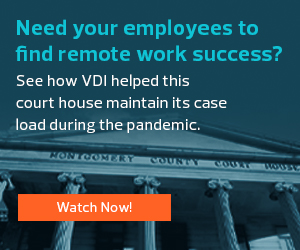Collaboration Software Changed Work Habits at the Agency
Lake County stood up a public health emergency operations center in March. At first, the unit was responsible for containment and mitigation activities such as contact tracing, but the focus has since shifted to vaccination. “We were able to almost immediately spin up that group in Microsoft Teams,” McMillan-Wilhoit says.
Although the agency’s employees already had access to Teams, the pandemic created a sort of forced adoption initiative that woke workers up to the software suite’s functionality. “Suddenly, it was the only way we had to continue our operations and to communicate,” McMillan-Wilhoit says. “People used it, and they realized how useful it was. I had users who were just absolutely amazed that they could upload a file into a team and then all work on it together.”
Nearly all of the agency’s meetings are now being conducted over video via Teams, and the collaboration suite is also subtly shifting employees away from long, drawn-out email threads and toward chat conversations that allow for more of a real-time exchange. “It’s more synchronous communication,” says McMillan-Wilhoit, who wants the department to be essentially “email free” five years from now. “I can have a back-and-forth conversation rather than getting a very lengthy email and then having to meditate on it and respond to it.”
Microsoft Teams allows groups to escalate conversations organically, McMillan-Wilhoit adds. “Most conversations will start out as a chat, and then we’ll say, ‘We probably need to move this into the team.’ Then we say, ‘This is actually turning into a project,’ and all communication goes in there.”
Before moving to Teams, employees would often circulate files via email, and then inevitably lose track of who had the most recent version. “It caused a lot of confusion,” he says. “Now, we get that efficiency because we don’t have as much email traffic, and we’re not missing things.”












